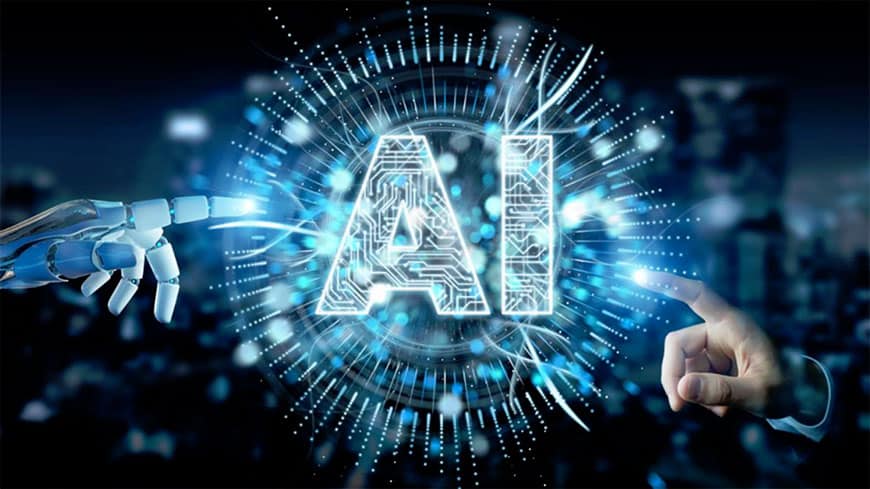
Artificial intelligence, with its ability to mimic human abilities of decision making and problem-solving, is the hero technology that currently, businesses need to boost performance.
Enterprise AI software combines the most sought-after human abilities such as thinking, learning, perception, and interaction, which makes it a perfect fit for businesses that are looking to boost their impact without investing heavily in human resources. Embedding AI into the very core of an organization’s data strategy gives an edge to businesses by leveraging the ultra-precision and processing powers of such machines.
Firms of all sizes are deploying enterprise automation platform with the expectation that enterprise AI might ameliorate a host of business challenges. So, do enterprise AI projects live up to these hopes, or is the reality different? This article aims to throw light on it and help in understanding the nuances of artificial intelligence for businesses to make informed decisions about investing in AI.
From Expectations of AI to Reality of AI – Dream or Dystopia?
Exaggerated expectations and fears about AI, together with an over-emphasis on humanoid representations, can affect public confidence and perceptions. They may contribute to the misinformed debate, potentially significant consequences for AI research, funding, regulation, and reception.
– The Royal Academy’s Report
A few years back, Facebook researchers discovered that the bots they had developed for simulating negotiations with humans had started conversing with each other in a language unknown to humans. The bots had created their language, and the experiment was shut down as it did not serve its purpose of negotiating with humans. This was a significant but not uncommon incident amongst the AI community.
This led to reports and articles inducing doubt and fear in the minds of the general public and artificial intelligence was misrepresented.
However, AI is not smart as such without human intervention. Artificial intelligence, like other technologies, needs human intelligence for proper implementation and for making the best use of its applications. And enterprises are understanding the phenomenon and IT industry is hailing Al as a breakthrough technology.
A recent McKinsey Global Institute executive briefing suggests that AI is set to transform the nature of work and the workplace itself.
When automation began to take over the roles of IT professionals, there were proclamations of how AI would replace humans in the workplace. People started believing that enterprise AI would be the reason for job cuts and layoffs. Though AI does remove the need to hire people for redundant work, the complete reality is far from this demoralizing belief.
For instance, when robotic automation in assembly lines was introduced, people expected jobs to be cut on a massive scale. But what happened is that some jobs gradually declined, while the nature of other jobs slightly changed, and many new job opportunities were created, such as machine maintenance and servicing.
Similarly, it is expected that enterprise AI will create more jobs in other industries including IT in the future. Cost reduction due to automation will make human intelligence available to perform more innovative tasks.
Real-World Applications of Artificial Intelligence
In business, AI is used for processing redundant tasks using automation. This is called RPA or robotic process automation and is one of the best software in the business process automation solutions category. It makes tedious and repetitive tasks easier by handling large volumes of data and processes using machine learning and artificial intelligence and frees up a lot of time and human resources.
Here are some of the most common examples of how enterprise AI is helping businesses in multiple ways –
Customer Service Industry
When a customer visits a website, they are often greeted with customer support via an automated responder bot which serves as the customer service agent. From answering FAQs to providing personalized services like cross-selling and personal recommendations based on past consumption behavior, chatbots and messenger bots are replacing human agents in the customer service industry. Examples such as messaging bots on e-commerce platforms and messaging apps like Facebook Messenger and Slack are changing the way customers engage and interact with brands.
For another example, Toronto Airport enhanced its customer experience by implementing automation solutions to their core operations with the help of Wipro Holmes and upgraded their digital operations across key customer touchpoints. Passengers were happy to report major reductions in service desk call time and ticket resolutions.
Agriculture
One of the most recent applications of AI can be seen in the agriculture sector. Automation and robotics used in agriculture are used to seek better ways to protect the crops from external factors such as weather, market conditions, weeds, and more. Furthermore, AI is also used for coming up with innovative solutions for problems such as climate change, food security, and population growth by improving crop yield and targeted production to fulfill market demands.
Apart from that, artificial intelligence enables image recognition using a smartphone’s camera. This helps farmers to easily find out defects in crops or soil quality through capturing images. They also get readily available tips for dealing with the identified defects such as soil restoration and fertility etc through AI.
Automated Stock Trading
Before artificial intelligence, trading and financial companies relied on computers and data scientists to predict future trends with maximum accuracy. But machines became increasingly intelligent with AI and enterprise automation platforms and changed the entire game of stock trading.
AI-driven trading platforms that perform high-frequency trading and rely on automation to optimize portfolios and make millions of trades per day without human intervention. For example, Trading Technologies, a trading firm in Chicago, used an AI-based platform for identifying complex trading patterns in real-time, on a massive scale across multiple markets. This helped the company to provide an ongoing assessment of compliance risk to its clients and further expand its business by acquiring another trading firm, Neurensic in 2017.
Banking and Financial Services
Enterprise AI is tremendously helpful when it comes to fraud detection, hence making it a perfect fit for detecting anomalies and credit card frauds for banks. Customer support is another application of artificial intelligence in the banking industry. For example, HDFC bank used an AI-based chatbot, EVA (Electronic Virtual Assistant) to chat with customers, provide basic information through chat and have millions of conversations simultaneously.
In Finance, AI is not just used for fraud detection, but also for tracing credit card usage and endpoint access. Behavior and pattern analysis give the security professionals a better means to prevent fraud and deal with breaches or threats within a reasonable time.
For example, MasterCard and RBS rely on AI and deep learning to detect suspicious transactions and prevent card frauds which have already saved them millions of dollars.
Conclusion – Overcoming the odds
Enterprise AI is the need of the hour. However, this will cultivate an AI and automation-driven era. And for IT professionals, new skills such as programming and coding and a basic understanding of the algorithms that govern AI and machine learning functionality will be key for thriving in the new era.
So, what can we expect from artificial intelligence?
There is a degree of certainty that AI will do wonders for all industries—including IT. It frees the human workforce with enterprise automation platforms for innovation and better implementation of such technologies. It requires taking tactical steps towards investing in technologies like cloud, hybrid, and IT to make the AI dream a reality.


